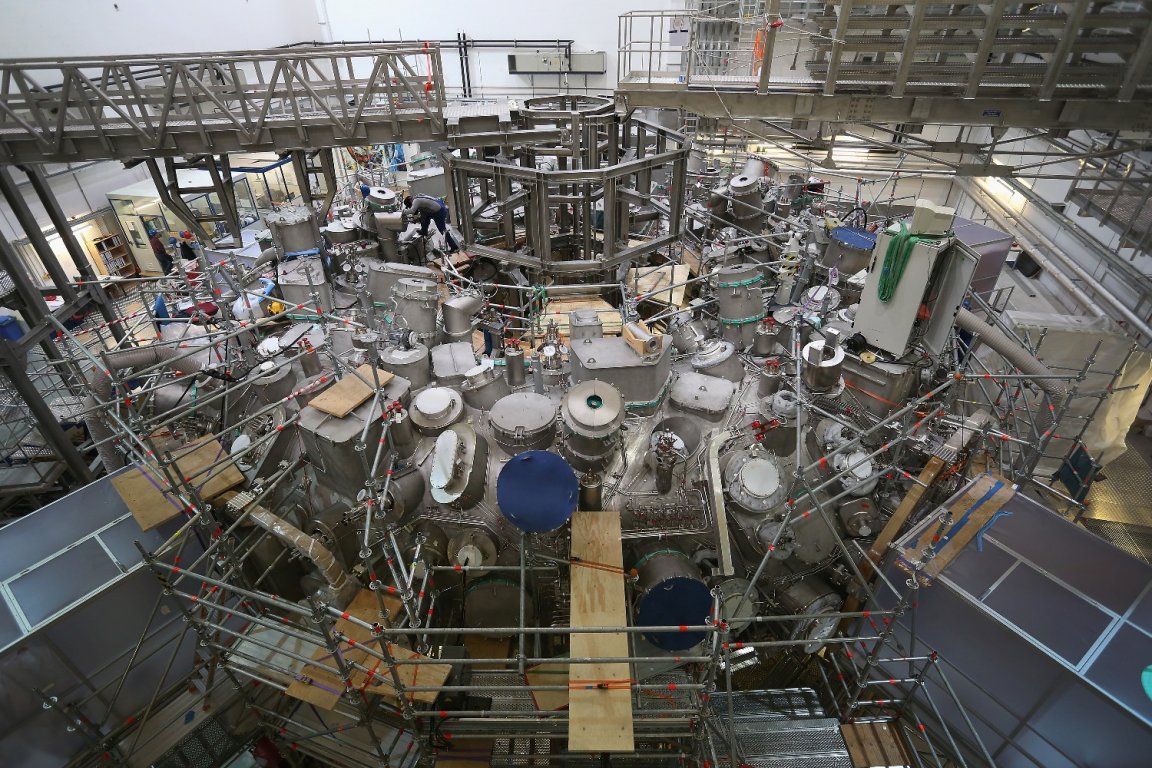
The Breakthrough
Today ( December 10, 2015), the first helium plasma was produced in the Wendelstein 7-X fusion device at the Max Planck Institute for Plasma Physics (IPP) in Greifswald, Germany. After over a year of preparations and tests, the experimental operation has now begun, and all is going smoothly.
Wendelstein 7-X is the world’s largest stellarator-type fusion device. Its objective is to investigate the suitability of this type of device as a power generator.
It took nine years of construction work and more than a million assembly hours to put the Wendelstein 7-X together. Construction was completed in April 2014. Preparations have been underway ever since. Finally, one milligram of helium was fed into the evacuated plasma vessel. The microwave heating was then switched on for a short 1.3 megawatt pulse, after which the first plasma was observed. This first plasma had a duration of one tenth of a second and achieved a temperature of around one million degrees Celsius (1.8 million Fahrenheit).
“We’re starting with a plasma produced from the noble gas helium. We’re not changing over to the actual investigation object, a hydrogen plasma, until next year,” project leader Professor Thomas Klinger stated in the release.
“This is because it’s easier to achieve the plasma state with helium. In addition, we can clean the surface of the plasma vessel with helium plasmas,” he continued.
The Implications
The objective of fusion research is to develop a power source that is environmentally friendly and produces energy from the fusion of atomic nuclei, similar to the process that powers the Sun. Since the fusion fire only ignites at temperatures of more than 100 million degrees, the fuel – a thin hydrogen plasma – must not come into contact with cold vessel walls.
Using magnetic fields, the plasma floats virtually free from contact inside a vacuum chamber. For the magnetic cage, two different designs are available: The tokamak and the stellarator. Both types are being investigated at the IPP.